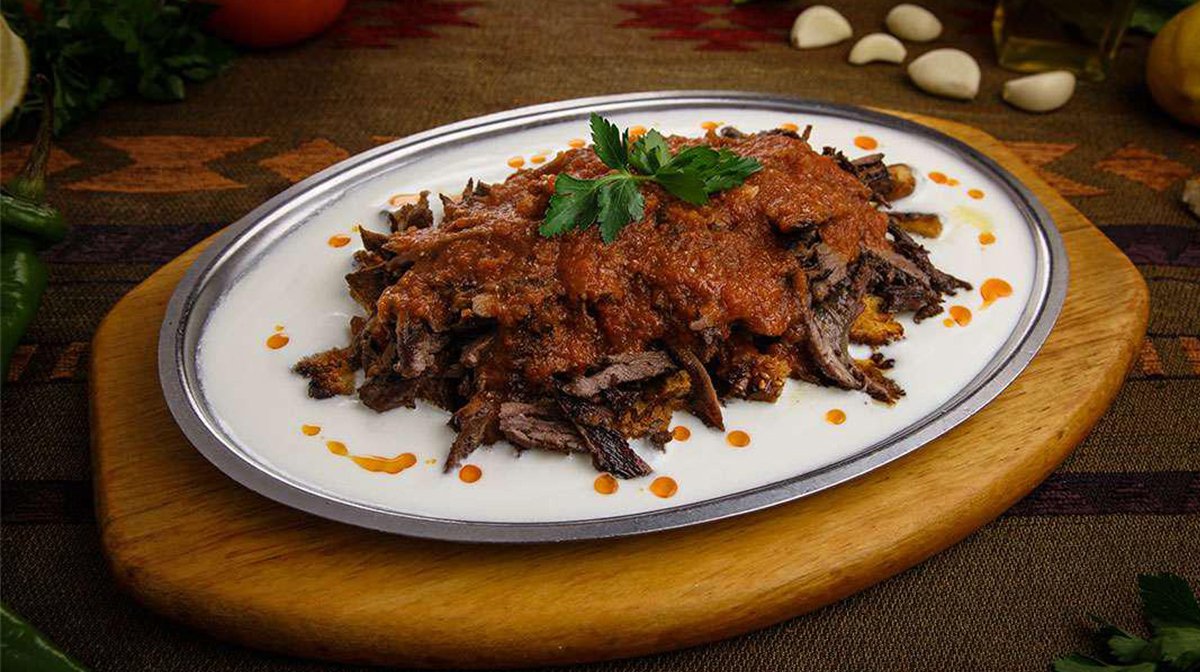Çebiti is more than just a dish; it is a symbol of Turkish heritage and a testament to the country’s rich culinary traditions. This traditional food reflects the history, geography, and social customs of Turkey. In many Turkish households, preparing and enjoying Çebiti is an act that connects generations, bringing families together over a shared love for authentic, homemade meals.
Origins of Çebiti
The origins of Çeb ti trace back to the heartlands of Anatolia, where it was first crafted by resourceful homemakers using locally available ingredients. Over centuries, this dish has evolved, incorporating influences from various regions and adapting to the tastes of different generations. Despite these changes, the essence of Çeb iti remains rooted in its humble beginnings, celebrating simplicity and authenticity.
What is Çebiti?
Traditional Ingredients in Çebiti
The traditional recipe for Çeb iti is a harmonious blend of fresh, local ingredients. Key components typically include a variety of vegetables, herbs, and sometimes meat, all simmered together to create a flavorful and nourishing dish. The use of olive oil, tomatoes, peppers, and spices like sumac and paprika are hallmarks of Çeb iti, contributing to its distinctive taste and aroma.
Çebiti Through the Ages
As Turkish cuisine has evolved, so too has the preparation of Çebiti. In ancient times, it was a staple meal for villagers who relied on seasonal produce. Today, Çebiti can be found in both rural kitchens and upscale restaurants, each version offering a unique take on this beloved classic. The evolution of Çebiti is a testament to its versatility and enduring popularity.
Modern Twists on Traditional Çebiti
Çebiti in Different Turkish Regions
Turkey’s diverse regions have each put their spin on Çeb iti, leading to a variety of delicious adaptations. In coastal areas, seafood may be incorporated, while inland regions might favor a heartier, meat-based version. These regional variations highlight the adaptability of Çeb iti, showcasing how it can be tailored to different tastes and ingredient availability.
Unique Regional Ingredients
Regional variations of Çeb iti often feature unique local ingredients that add a distinct flavor profile to the dish. For example, in the Aegean region, fresh herbs like dill and parsley are commonly used, while in Southeastern Anatolia, spices such as cumin and coriander might be more prevalent. These ingredients not only enhance the flavor but also reflect the agricultural richness of each region.
How to Prepare Çebiti
Step-by-Step Guide to Making Çebiti
Creating a perfect Çeb iti involves several steps, each crucial to achieving the dish’s characteristic flavor and texture. Start with fresh vegetables, chopped finely, and sauté them in olive oil until tender. Add your choice of meat, if desired, and cook until browned. Incorporate tomatoes and a blend of spices, simmering everything together until the flavors meld beautifully. The result is a comforting and hearty dish that embodies the essence of Turkish home cooking.
Essential Cooking Tips for Çebiti
To master the art of making Çeb iti, keep these tips in mind: use the freshest ingredients available, don’t rush the cooking process, and adjust the seasoning to your taste. Allowing the dish to simmer slowly ensures that the flavors develop fully, and tasting as you go can help balance the spices perfectly. Remember, Çeb iti is as much about personal preference as it is about tradition.
Health Benefits of Çebiti
Nutritional Value of Çebiti
Çeb iti is not only delicious but also packed with nutritional benefits. It is rich in vitamins, minerals, and antioxidants, thanks to the abundance of vegetables used. When prepared with lean meats or seafood, it also provides a good source of protein. The olive oil used in Çeb iti adds healthy fats, making this dish a balanced and wholesome option for any meal.
Healthier Versions of Çebiti
For those looking to make a healthier version of Çeb iti, there are several options. Consider using more vegetables and less meat, or substitute meat with plant-based proteins like beans or lentils. Reducing the amount of oil and salt can also help make the dish lighter without compromising on flavor. These modifications ensure that Çeb iti remains a nutritious and enjoyable meal.
Çebiti in Turkish Festivals and Celebrations
Role of Çebiti in Festive Occasions
Çeb iti often plays a central role in Turkish festivals and celebrations. It is commonly served during family gatherings, religious holidays, and community events. The preparation and sharing of Çeb iti during these times reinforce its status as a dish that brings people together, symbolizing unity and tradition.
Symbolism of Çebiti in Celebrations
The inclusion of Çeb iti in festive menus goes beyond its taste; it carries symbolic meanings as well. It represents abundance, hospitality, and cultural heritage. By serving Çeb iti, hosts express their respect for tradition and their desire to provide comfort and joy to their guests. This symbolic significance makes Çeb iti a cherished part of Turkish celebrations.
Serving and Enjoying Çebiti
Traditional Serving Methods
Traditionally, Çeb iti is served in a communal setting, often in a large dish from which everyone helps themselves. This style of serving fosters a sense of community and shared experience. It is typically accompanied by fresh bread, rice, or bulgur, and sometimes a side of yogurt, which complements the flavors beautifully.
Pairing Çebiti with Other Dishes
Çeb iti pairs wonderfully with a variety of other dishes. A fresh salad with seasonal vegetables, a bowl of creamy yogurt, or a plate of stuffed grape leaves are all excellent accompaniments. These pairings not only enhance the meal but also reflect the diversity and richness of Turkish cuisine.
Popular Çebiti Recipes
Classic Çebiti Recipe
The classic recipe for Çeb iti is straightforward yet incredibly flavorful. Start by sautéing onions and garlic in olive oil, then add chopped tomatoes, peppers, and your choice of meat. Season with salt, pepper, paprika, and sumac. Simmer until everything is tender and the flavors have melded together. This traditional approach ensures a dish that is both comforting and satisfying.
Modern Adaptations of Çebiti
Modern adaptations of Çeb iti can include a variety of ingredients and cooking techniques. For example, adding quinoa or bulgur can make the dish heartier, while incorporating exotic spices like saffron or turmeric can introduce new flavor dimensions. These contemporary twists keep Çeb iti exciting and relevant to today’s culinary trends.
The Global Influence of Çebiti
Çebiti in International Cuisine
Çeb iti’s appeal extends beyond Turkey’s borders, finding a place in international cuisine. It is celebrated in Mediterranean restaurants worldwide and appreciated by food enthusiasts who value its authentic taste and versatility. The global influence of Çeb iti underscores its status as a dish that transcends cultural boundaries.
How Çebiti is Embraced Worldwide
Around the world, Çeb iti is embraced not just for its taste but also for its cultural significance. Chefs and home cooks alike experiment with its ingredients, adapting it to local palates while preserving its traditional essence. This global appreciation for Çeb iti highlights its universal appeal and enduring legacy.
Sustainability and Çebiti
Sourcing Local Ingredients
One of the key principles in preparing Çeb iti sustainably is using local ingredients. This practice supports local farmers, reduces the carbon footprint associated with food transport, and ensures the freshest possible produce. Emphasizing local sourcing aligns with the traditional methods of making Çeb iti, where ingredients were often gathered from nearby farms and markets.
Eco-Friendly Practices in Making Çebiti
Adopting eco-friendly practices in making Çeb iti can include minimizing waste, using energy-efficient cooking methods, and choosing organic produce. These practices not only benefit the environment but also enhance the quality and taste of the dish. By being mindful of sustainability, we honor the traditional roots of Çeb iti while contributing to a healthier planet.
Conclusion
Çebiti is a dish that encapsulates the essence of Turkish culinary tradition. Its rich history, diverse regional variations, and adaptability to modern tastes make it a beloved favorite among food enthusiasts. Whether enjoyed during festive celebrations or as a comforting home-cooked meal, Çebiti continues to bring people together, celebrating the flavors and culture of Turkey. Embracing sustainability and innovation while honoring its traditional roots ensures that Çebiti will remain a cherished part of global cuisine for generations to come.
Frequently Asked Questions about Çebiti
What are the main ingredients in Çebiti?
The main ingredients typically include vegetables like tomatoes and peppers, olive oil, and spices such as sumac and paprika. Meat or seafood can also be added based on regional preferences.
How is Çebiti traditionally served?
Çebiti is traditionally served in a large communal dish, often accompanied by bread, rice, or yogurt.
Can Çebiti be made vegetarian or vegan?
Yes, Çebiti can be easily adapted to vegetarian or vegan diets by omitting meat and using plant-based proteins like beans or lentils.
What is the best way to enhance the flavor of Çebiti?
Using fresh, high-quality ingredients and allowing the dish to simmer slowly can significantly enhance its flavor. Adjusting the seasoning to your taste is also important.
Is Çebiti a healthy dish?
Yes, Çebiti is generally healthy, rich in vitamins, minerals, and antioxidants. Healthier versions can be made by using more vegetables and less oil.
Where can I find authentic Çebiti?
Authentic Çebiti can be found in Turkish households, local restaurants in Turkey, and Mediterranean eateries worldwide.





